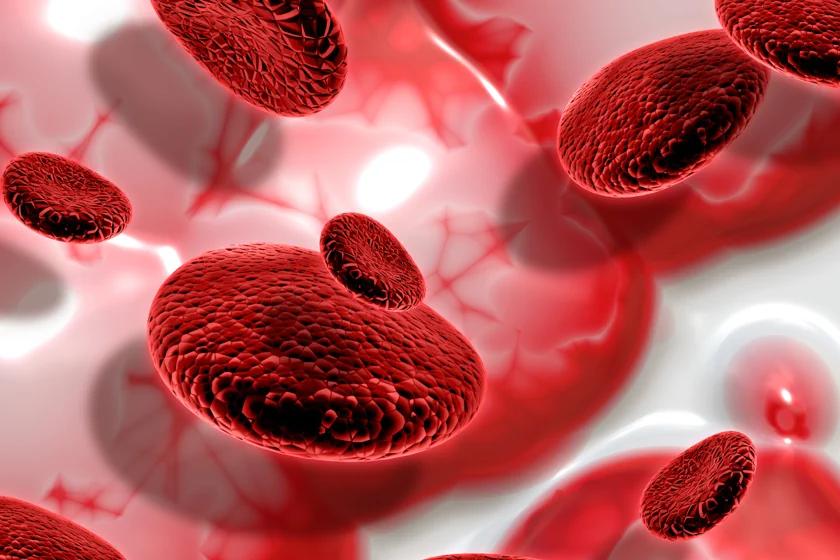
Unraveling the Mysteries of Blood Clotting Disorders
Imagine waking up to a seemingly ordinary day, only to find yourself caught in the intricate web of a silent adversary – a blood clot. As inconspicuous as it may seem, this tiny clot has the potential to unleash chaos within your body, threatening your very existence.
But fear not, for within the depths of this guide lies the key to unraveling the mysteries of blood clotting disorders.
Join us on a journey through the shadows of uncertainty as we shine a light on the path from diagnosis to treatment, empowering you to conquer the darkness and emerge victorious against this formidable foe.
Understanding Blood Clotting Disorders
Blood clotting, also known as coagulation, is a vital process that helps stop bleeding when blood vessels are injured. It involves a complex series of events that occur in response to vascular damage, ultimately leading to the formation of a blood clot or thrombus.
Basics of Blood Clotting:
When blood vessels are injured, platelets (tiny blood cells) adhere to the site of injury and become activated, releasing chemical signals that attract more platelets to the area.
These activated platelets form a temporary plug at the site of injury, which helps reduce blood loss.
Simultaneously, a cascade of clotting factors in the blood plasma is activated, leading to the formation of fibrin, a protein that strengthens and stabilizes the platelet plug, forming a blood clot.
Once the blood vessel is repaired, clotting is regulated by natural anticoagulants in the blood, which prevent excessive clot formation and promote clot dissolution.
Blood Clotting Disorders:
Blood clotting disorders occur when there is a disruption in the normal clotting process, leading to abnormal clot formation or inadequate clotting. Common types of blood clotting disorders include Deep vein thrombosis (DVT), pulmonary embolism (PE), thrombophilia, and hemophilia.
Deep vein thrombosis (DVT) occurs when a blood clot forms in a deep vein, typically in the leg, causing swelling, pain, and potentially life-threatening complications if the clot breaks loose and travels to the lungs (known as a pulmonary embolism).
Thrombophilia refers to a group of genetic or acquired conditions that increase the risk of abnormal blood clotting, predisposing individuals to conditions like DVT and PE. These are also called hypercoagulable states.
Thrombophilia is believed to affect around 1-2% of the general population, with certain genetic mutations, such as Factor V Leiden and prothrombin gene mutation, being among the most common risk factors.
Hemophilia is a rare genetic disorder characterized by a deficiency or dysfunction of clotting factors, leading to prolonged bleeding and impaired clot formation.
Diagnosing Blood Clotting Disorders
Diagnosing blood clotting disorders is a crucial step in preventing potentially life-threatening complications associated with abnormal clot formation. Healthcare providers employ a variety of diagnostic tests to identify these disorders, tailored to the specific needs and symptoms of each individual.
Learn about the Impact of open vascular reconstruction on blood flow
Blood tests play a central role in diagnosing blood clotting disorders. These tests may include measuring levels of clotting factors, such as prothrombin time (PT), activated partial thromboplastin time (aPTT), and international normalized ratio (INR), which assess the blood’s ability to clot properly. Additionally, specific tests, such as D-dimer assays, can detect the presence of fibrin degradation products, indicative of active clot formation in the body.
Imaging studies, such as ultrasound and computed tomography (CT) scans, are valuable tools for visualizing blood clots and assessing their location and extent. Ultrasound imaging is particularly useful for detecting deep vein thrombosis (DVT) in the legs, allowing healthcare providers to visualize the clot and assess its severity. CT scans may be used to diagnose pulmonary embolism (PE), providing detailed images of the blood vessels in the lungs to identify the presence of a clot.
Genetic testing may be recommended in cases where there is suspicion of an underlying genetic predisposition to blood clotting disorders, such as thrombophilia. These tests can identify specific genetic mutations, such as Factor V Leiden or prothrombin gene mutations, that increase the risk of abnormal clot formation.
Early detection and prompt diagnosis are paramount in preventing complications associated with blood clots. Untreated or undiagnosed blood clotting disorders can lead to serious consequences, including pulmonary embolism, stroke, and organ damage. By identifying blood clotting disorders early, healthcare providers can initiate appropriate treatment strategies to prevent clot progression, reduce the risk of complications, and improve patient outcomes.
Treatment Options for Blood Clotting Disorders
Treating blood clotting disorders requires a multifaceted approach aimed at preventing clot formation, dissolving existing clots, and reducing the risk of recurrence. Healthcare providers may recommend various treatment modalities based on the type and severity of the clotting disorder, as well as individual patient factors.
1. Anticoagulant Medications:
Anticoagulants, also known as blood thinners, are commonly prescribed to prevent the formation of new blood clots and inhibit the growth of existing clots. These medications work by interfering with the body’s clotting process, thereby reducing the risk of clot formation. Examples of anticoagulant medications include warfarin, heparin, and direct oral anticoagulants (DOACs) such as rivaroxaban and apixaban.
2. Thrombolytic Therapy:
Thrombolytic therapy, also known as clot-busting therapy, is used to dissolve existing blood clots quickly. This treatment involves administering medications known as thrombolytics, which help break down the clot and restore blood flow to the affected area. Thrombolytic therapy is often used in cases of severe or life-threatening blood clots, such as pulmonary embolism or acute ischemic stroke.
3. Surgical Interventions:
In some cases, surgical interventions may be necessary to remove or prevent the spread of blood clots. Surgical procedures such as thrombectomy, embolectomy, or venous thrombectomy may be performed to physically remove the clot from the affected blood vessel. In rare cases of chronic or recurrent blood clots, surgical interventions such as inferior vena cava (IVC) filter placement may be considered to prevent clot migration to vital organs.
4. Compression Therapy:
Compression therapy involves wearing special compression garments or stockings to apply pressure to the legs, promoting blood flow and reducing the risk of blood clots. Compression therapy is often recommended for individuals at risk of developing deep vein thrombosis (DVT), such as those who have undergone surgery or are immobilized for extended periods.
How to choose the Right Compression Socks?
5. Lifestyle Modifications:
Lifestyle modifications play a crucial role in managing blood clotting disorders and reducing the risk of clot formation. These may include maintaining a healthy weight, staying physically active, avoiding prolonged periods of immobility, quitting smoking, and following a balanced diet low in saturated fats and cholesterol.
The goals of treatment for blood clotting disorders are to prevent clot growth, dissolve existing clots, and reduce the risk of recurrence. By implementing a comprehensive treatment plan tailored to individual patient needs, healthcare providers can effectively manage blood clotting disorders and improve patient outcomes. It is essential for patients to work closely with their healthcare team to monitor their condition, adhere to treatment recommendations, and make lifestyle modifications to promote optimal health and well-being.
FAQs About Blood Clotting Disorders
Symptoms vary depending on the type and location of the blood clot but may include swelling, pain, redness, warmth, and tenderness in the affected area.
Some blood clotting disorders have a genetic component, while others may be acquired due to factors such as medical conditions, medications, or lifestyle habits.
Diagnosis typically involves a combination of medical history assessment, physical examination, blood tests, imaging studies, and genetic testing, as appropriate.
Treatment may include anticoagulant medications (such as warfarin or direct oral anticoagulants), thrombolytic therapy, compression therapy, and in some cases, surgical intervention.
While some risk factors for blood clotting disorders are not modifiable, lifestyle modifications such as staying physically active, maintaining a healthy weight, avoiding smoking, and managing underlying medical conditions can help reduce the risk of clot formation.
Conclusion
In summary, treating blood clotting disorders involves a range of options tailored to individual needs. These may include anticoagulant medications, thrombolytic therapy, or surgical interventions, all aimed at preventing clot growth, dissolving existing clots, and reducing the risk of recurrence. For personalized consultation and expert care, schedule an appointment with Dr. Sumit Kapadia, a leading vascular surgeon in Vadodara. With his expertise, you can embark on a path to improved vascular health and well-being.

MBBS, MS, MRCS, DNB-Fellow
Dr. Sumit Kapadia
Dr. Sumit Kapadia / MR KAPADIA SUMIT a gold-medalist from Baroda Medical College, obtained his general surgical training and senior residency from SSG Hospital, Vadodara.

MBBS, MS, MRCS, DNB-Fellow
Dr. Sumit Kapadia
Dr. Sumit Kapadia / MR KAPADIA SUMIT a gold-medalist from Baroda Medical College, obtained his general surgical training and senior residency from SSG Hospital, Vadodara.



